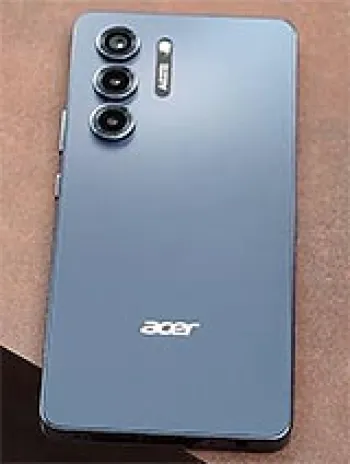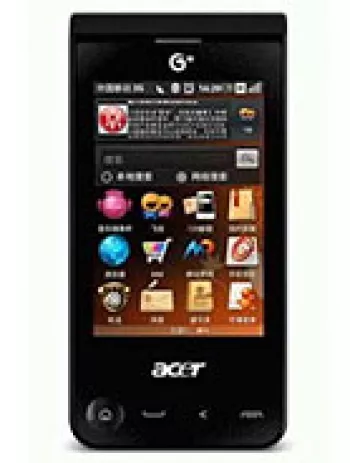
Overview of Acer Liquid E3
The Acer Liquid E3 is a smartphone that was announced in February 2014 and subsequently released in April of the same year. Although it has since been discontinued, the Liquid E3 serves as a remarkable example of what midrange smartphones offered during the early 2010s. Featuring Android 4.2.2 Jelly Bean, the device comes with a suite of features that made it appealing to many consumers interested in a cost-effective yet functional mobile experience.
Network Capabilities
Regarding network capabilities, the Acer Liquid E3 supports GSM and HSPA technologies, catering to 2G bands including GSM 850, 900, 1800, and 1900, along with 3G bands for HSDPA. This supports data technologies such as GPRS and EDGE for reliable mobile internet connectivity.
Design and Build
The Acer Liquid E3 is constructed with a sleek design measuring 136 x 68 x 9 mm and weighing 134 g. It offers both single SIM and dual SIM options, utilizing Micro-SIM cards. The dual SIM option is particularly enticing to users who require separate numbers for personal and business use.
Display Quality
The device boasts a 4.7-inch IPS LCD touchscreen display, offering a resolution of 720 x 1280 pixels. With a screen-to-body ratio of about 65.8% and a pixel density of approximately 312 ppi, the display delivers clear, sharp images and decent color accuracy within its category.
System Performance
Underpinning the performance of the Acer Liquid E3 is the Mediatek MT6589 chipset, employing a 28 nm process technology. The smartphone's CPU is a quad-core 1.2 GHz Cortex-A7, designed to deliver competent everyday performance. Its GPU, a PowerVR SGX544, enables satisfactory graphics processing, adequate for common applications and multimedia playback.
Memory and Storage
The device comes with 1GB of RAM and an internal storage capacity of 4GB. Although this might be limiting for today's standards, it was typical for midrange phones of that era. Furthermore, the Liquid E3 provides a microSDHC card slot, allowing users to expand storage to accommodate additional apps, media, and files.
Camera Specifications
The primary camera of the Acer Liquid E3 features a 13 MP sensor with autofocus and an LED flash. This camera setup allows users to capture high-quality images under well-lit conditions and moderate-quality images in low-light settings. For selfies and video calls, a 2 MP front camera is available, along with its own LED flash, making it a noteworthy feature in its category.
Audio and Communication
The Liquid E3 is equipped with a loudspeaker and a 3.5mm audio jack, offering versatility in sound output and accessory compatibility. For wireless communication, it supports Wi-Fi 802.11 b/g/n with hotspot capabilities, Bluetooth 4.0, and basic positioning services via GPS and GLONASS. However, NFC is not supported. It also features an FM radio tuner and microUSB 2.0 port for data transfer and charging purposes.
Sensors and Other Features
The smartphone includes essential sensors such as an accelerometer and proximity sensor. These sensors facilitate functionalities like screen auto-rotation and power-saving features during phone calls.
Battery Life
Powering the Acer Liquid E3 is a non-removable Li-Ion 2500 mAh battery. According to the listed specifications, it provides up to 260 hours of standby time and up to 5 hours of talk time. These figures reflect decent performance levels for the device's target user demographic at its time of release.
Color and Pricing
The Acer Liquid E3 was available in black and white colors. Its pricing was approximately 200 EUR, positioning it as an affordable option for those seeking a budget-friendly smartphone with a reasonable array of features.
Conclusion
In retrospect, the Acer Liquid E3 was a competitive choice in the midrange smartphone market upon its release. With a balanced set of specifications encompassing a good display, capable camera setups, sufficient networking options, and modest system performance, it provided an all-around satisfying user experience. Although technology has significantly advanced since the Liquid E3's era, this device remains a testament to Acer's commitment to delivering quality and value in its mobile devices.
Key Features of Acer Liquid E3
- 4.7-inch IPS LCD display with 720 x 1280 pixels resolution
- Compact size, lightweight at 134 grams
- Powered by Quad-core 1.2 GHz Cortex-A7 processor
- 13 MP main camera with autofocus and LED flash
- 2 MP selfie camera with LED flash
- Expandable storage via microSDHC card slot
- Dual SIM support for select models
- Comes with Android 4.2.2 Jelly Bean
- Wi-Fi and Bluetooth 4.0 connectivity
- Includes GPS and GLONASS positioning
- FM radio support
- 2500 mAh battery providing up to 260 hours standby time
Disadvantages of Acer Liquid E3
- Lacking 4G LTE connectivity; limited to GSM/ HSPA technology.
- Internal storage is limited to 4GB, which may be insufficient for many users.
- Runs on the outdated Android 4.2.2 (Jelly Bean) OS.
- The battery is non-removable, which can be inconvenient for replacements.
- Low RAM of only 1GB, potentially impacting multitasking performance.
- Relatively short talk time of up to 5 hours.
- No NFC support for easy mobile payments or quick Bluetooth pairing.
- Discontinued status, meaning no official support or updates from Acer.


View Also
More Phones
All Rights Reserved +14069 Phones © Mobilawy 2025
























